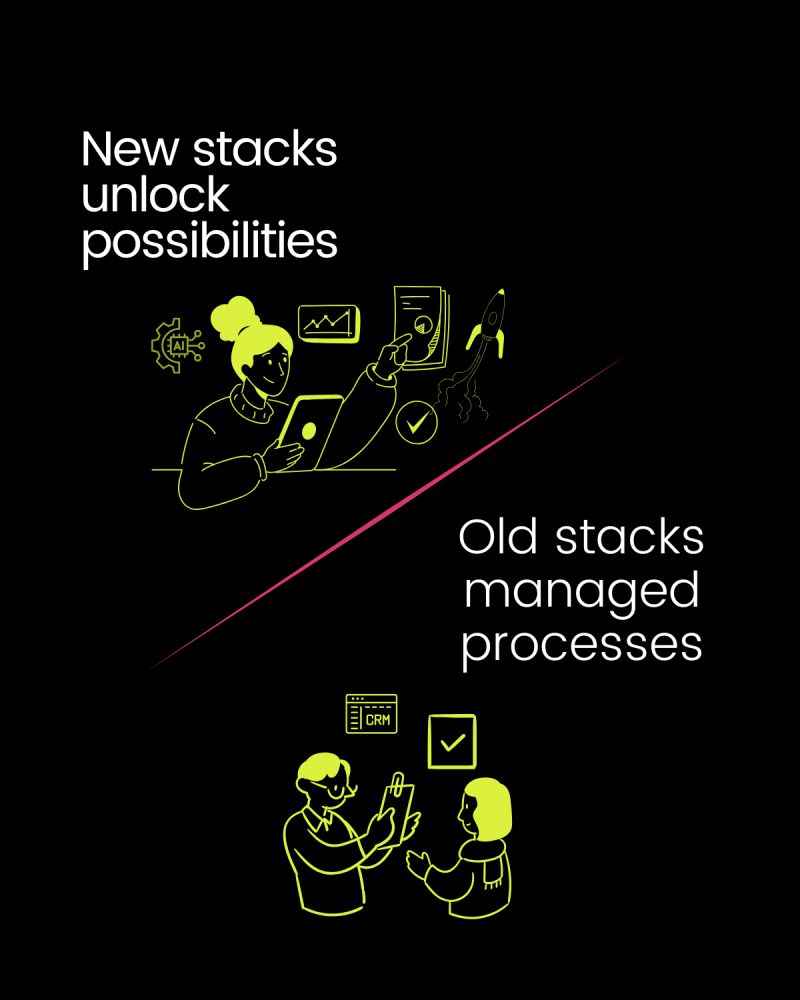The martech stack we’ve been building for the last decade? It’s not built for what’s coming next.
Most CMO stacks today are fragmented and heavily process-oriented—designed for coordination more than speed, creativity, or insight.
We have our CRM. Our MAP. Analytics dashboard. A content management system. A social scheduling tool. A pipeline of dashboards, integrations, and plugins—each solving a small part of the puzzle.
But here’s the thing: this stack was built to support the process. Not possibilities.
What AI is doing now—especially generative AI—is fundamentally reshaping what marketing can do, who can do it, and how fast.
And most current stacks aren’t designed to keep up. We’re going to see a shift from:
- Managing content → to dynamically generating and personalizing it
- Orchestrating campaigns → to testing, learning, and iterating in real-time
- Reporting what happened → to modeling what’s likely to happen (and what to do next)
This isn’t about replacing tools. It’s about rethinking the role of tools—from passive infrastructure to active collaborators.
The new CMO tech stack will look more like a ‘thinking’ partner than a set of dashboards.
And the marketers who’ll thrive won’t be the ones with the most tools—they’ll be the ones who can build a system that unlocks clarity, speed, and compounding insight.
The stack is changing. The job is changing. And the best marketers won’t just adopt the next tools—they’ll redefine how the game is played.









